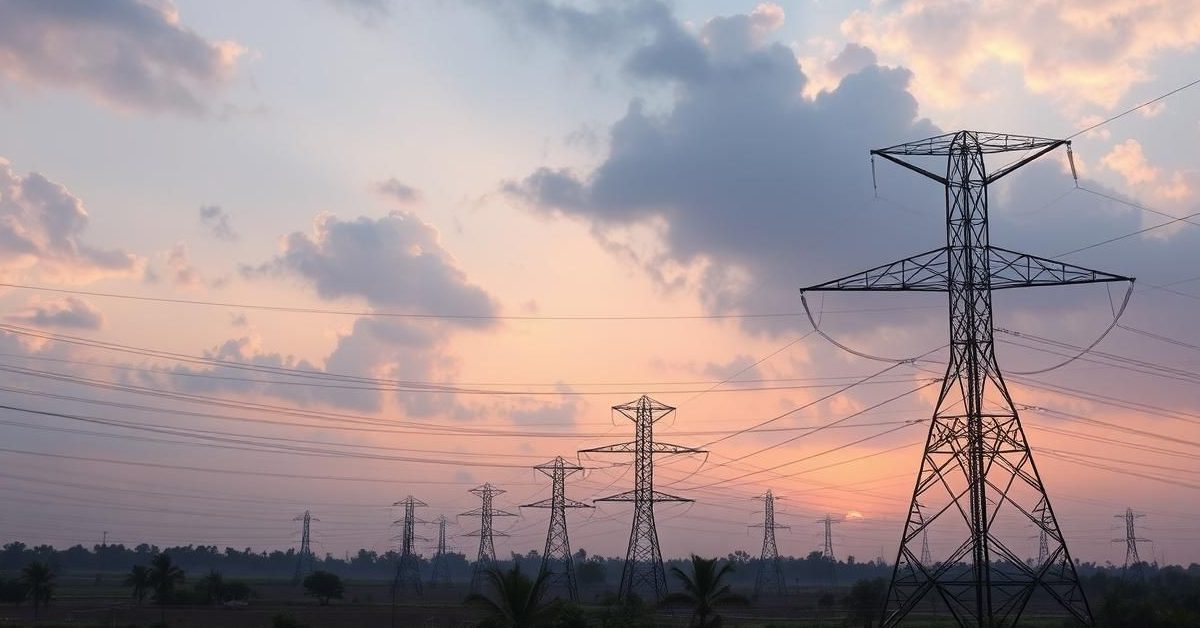India’s electricity consumption saw an unexpected dip in the first quarter of the fiscal year 2025-26, with eight out of the top ten power-consuming states reporting a year-on-year decrease.
India’s Power Use Takes a Dip
From April to June, India’s total power consumption fell by 1.4 percent compared to the previous year, reaching 451.8 billion units. This slowdown is particularly noticeable as it impacts the majority of states that account for 70 percent of the country’s electricity usage.
Only two states among the top ten, Punjab and Gujarat, managed to buck this trend, showing slight increases in their power consumption.
Why the Drop? Unseasonal Rains and a High Bar
Two main factors contributed to this unexpected decline: unseasonal rainfall in May and a “high base” from last year’s strong performance.
May saw a significant 4.7 percent drop in consumption due to unexpected showers across North India. June also experienced a 1.8 percent decline because of excess rainfall, with the southwest monsoon arriving earlier than usual, covering the entire country by June 29.
The “high base” refers to the robust growth many states experienced in the first quarter of the previous fiscal year (Q1 FY25). For example, Uttar Pradesh grew by 24 percent, Rajasthan by 21 percent, and Madhya Pradesh by 14 percent, making current year-on-year comparisons more challenging.
State-by-State Snapshot: Who Rose, Who Fell
Maharashtra, the country’s largest power consumer, saw a marginal decrease in electricity use. Uttar Pradesh experienced a more significant 5.6 percent fall.
Other states like Tamil Nadu, Karnataka, Rajasthan, West Bengal, Madhya Pradesh, and Andhra Pradesh also recorded drops ranging from 0.2 percent to 3 percent. In contrast, Punjab’s consumption edged up by 2.2 percent and Gujarat’s by 0.4 percent, showcasing resilience despite the national trend.
Regional Weather Differences Play a Role
Weather patterns had a clear impact. The northwest region of India, including North India, experienced 37 percent above-normal rainfall in June. This led to lower cooling demand, thus reducing electricity use.
However, the southern region saw a different picture. Power demand there actually increased by 5.3 percent year-on-year, aligning with a 5 percent rainfall deficit in the southern peninsula during June.
The Bigger Picture: India’s Steady Power Growth
Despite this recent quarterly dip, it’s important to look at the broader trend. India’s power consumption has grown steadily at a compound annual growth rate (CAGR) of 7 percent since Q1 FY22.
Among the top ten states, Uttar Pradesh leads in long-term growth with a 9.2 percent CAGR, followed by West Bengal (8.8 percent), Rajasthan (8.3 percent), Gujarat (8.2 percent), and Punjab (8.1 percent).
States like Andhra Pradesh, Tamil Nadu, and Maharashtra have shown slower, but still positive, long-term growth rates.
- India’s overall power consumption dropped 1.4% in April-June FY26.
- 8 out of 10 top power-consuming states saw a decline.
- Unseasonal rain and last year’s high consumption base were key factors.
- Punjab and Gujarat were the only major states to increase power use.
- Despite the dip, India’s power consumption has grown at a 7% CAGR since FY22.
This fluctuation highlights how sensitive power demand is to both weather conditions and economic activity, even as the country continues its long-term growth trajectory in energy consumption.














